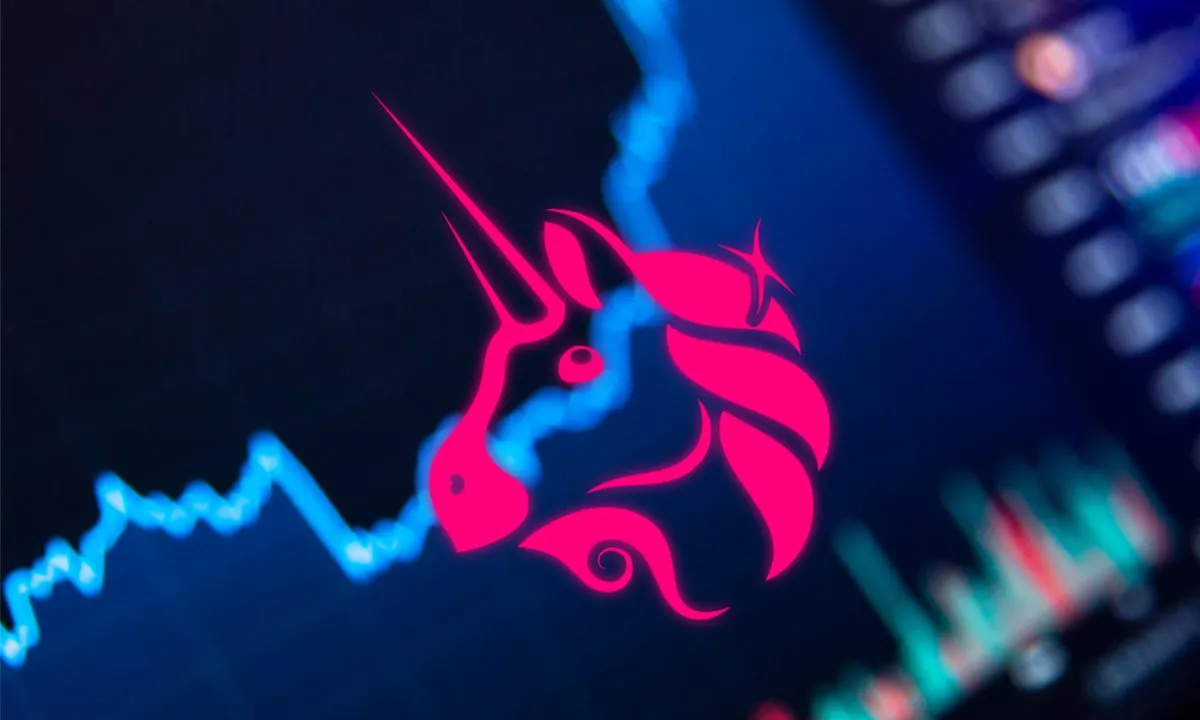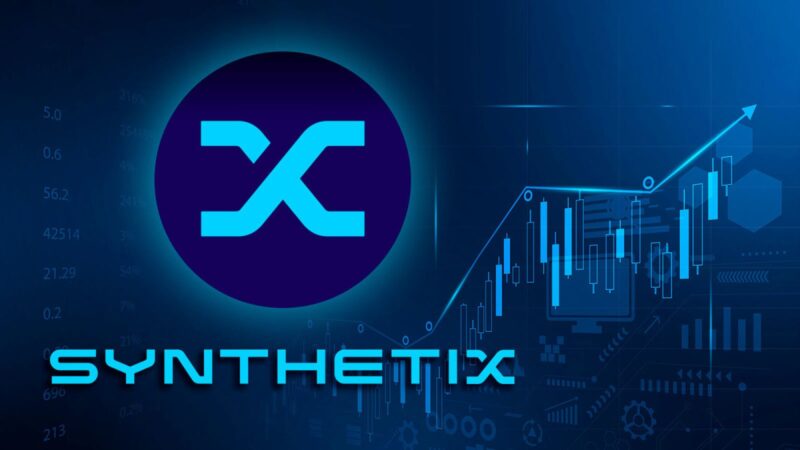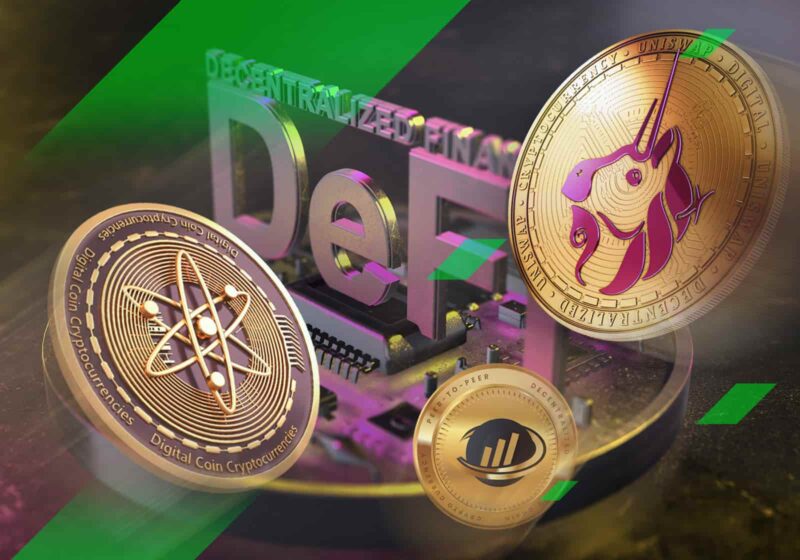DeFi coins, as the name suggests, are cryptocurrencies that are used to participate in the economy of their respective platforms.
But what exactly is DeFi?
Put simply, DeFi (Decentralized Finance, that is) is made up of applications and protocols built on blockchain technology.
These places do all the traditional banking stuff like issuing loans, facilitating investments, and enabling deposits, yet without the middleman.
Instead of having any employees do it, transactions are managed by smart contracts, which are literally self-executing agreements where terms are coded into algorithms, ensuring automatic and transparent execution.
Now that we’ve got the basics out of the way, let’s dive into the topic. Read on and we’ll share some of the most promising DeFi coins worth considering for investment.
And if you need to buy and sell cryptocurrency here and now, you may do it on Xgram.
What DeFi to Invest In
Here are our thoughts on the best DeFi projects to invest in. We won’t be using any specific weighting or stratification points. Instead, we’ll just chat about the options that look promising overall, like how easy they are to get to, what makes them unique, and so on.
Uniswap (UNI)
Uniswap is a peer-to-peer system designed for trading crypto tokens across various blockchains (primarily Ethereum) using smart contracts. Its key advantage is the wide range of assets available, largely thanks to near-zero listing fees.
Any ERC-20 token can be listed on Uniswap. Each one will have its own contract and liquidity pool — and if one doesn’t exist, it can be created like effortlessly.

Aave (AAVE)
Aave is one of the biggest DeFi protocols, working on Ethereum and over 10 other blockchains. It’s a decentralized platform where users can borrow and lend cryptocurrency. Thus, lenders earn rewards for providing liquidity and securing the network through our beloved smart contracts.
Like the other projects in this article, Aave has its own native token, AAVE. One might use it as collateral for soft loans and to pay transaction fees. But it also can be traded on exchanges, where it’s currently valued at around $290.
But that’s just the average price. AAVE is known for being pretty much volatile, which means the price is always changing, and often on a really short timeframe.
Maker (MKR)
MakerDAO is a platform built on Ethereum.
Its most impressive feature is its dual-token system: DAI (a crypto-backed stablecoin) and MKR (a providing one). MKR holders can vote on system parameters like fees and borrowing limits and earn some money in return.
The protocol makes sure DAI stays stable by adjusting fees and using something called the Target Rate Feedback Mechanism, or TRFM for short.
And, of course, it’s all decentralized.
Nuff said.
Synthetix (SNX)
Synthetix is the go-to for derivatives trading in DeFi. It lets you get a bunch of different assets from anywhere. Moreover, one may also earn rewards by providing collaterals to the protocol. The native SNX token has a total supply of just over 215 million, which is a somewhat impressive figure in itself.

Chainlink (LINK)
Chainlink is a project that supports DeFi protocols by enabling them to ″connect″ with and integrate various cryptocurrencies. Also, it automates manual processes and enhances security through off-chain communication.
Its native cryptocurrency, LINK, is doing well right now, yet like any asset, it has its ups and downs. But despite them, it’s still performing well overall. For example, in the last year, LINK’s price has increased by more than 40% from its 2023 lowest point.
Compound (COMP)
Compound Finance, or just Compound for short, is a DeFi lending protocol built on Ethereum. Since then, it’s expanded to support other networks too. Borrowers there may get loans by putting up collateral, and the interest rates are adjusted by the protocol based on supply and demand. But there’s an added perk — local users can earn COMP tokens while using the platform, so it’s not just about the stock borrowing & lending.
This all sounds fairly standard.
And it actually is.
But we find it particularly appealing here. As clarity, transparency, and predictability are always the best pick. As for COMP, it’s performing quite well. Since early April 2025, the token has been steadily rising in value and is now trading around $40 — it was below $35.

PancakeSwap (CAKE)
PancakeSwap is a non-custodial platform built on the Binance Smart Chain (BSC) for exchanging and yield farming with BEP-20’s. It’s got its own CAKE token and works in a similar way to Uniswap. But, unlike Ethereum-based exchanges, PancakeSwap offers faster transactions and lower fees, as BSC is a more centralized alternative to Ethereum.
Still a solid choice after all — all things considered. It’s also been audited by CertiK and uses some Oracle Security tools. Sure do, it has passed a Slowmist security audit as well.
Risks on DeFi Crypto Investment
Investing in DeFi isn’t without its risks, so it’s important to think about what you’re getting into before. Here are the main ones to watch out for.
Extreme (well, sometimes) volatility
DeFi coins are known for their extreme volatility — like the rest of the cryptos, of course. But in the local case, there’s an added layer of risk: it’s a highly experimental niche, where even experienced investors can get confused.
We should also note that liquidity providers in local pools face a unique risk (of a kind) — ″impermanent″ loss — when the price of this or that asset shifts relative to their initial value at the time of placement.
Regulatory risks
Right now, the DeFi sector doesn’t have many dives around it, yet this might change quickly as governments start checking out decentralized platforms more closely. If this happens, it might affect some projects, which could lead to restrictions, compliance requirements, or even bans in some places.
There’s really not much one can do to stop these changes. Anyways, it’s still important to stay informed and be ready to adapt.

Security shadows
Security is another big concern. DeFi’s are often targeted by hacks and exploits because of vulnerabilities in smart contracts, and even well-audited projects can be hijacked, resulting in fund losses.
And there have been lots of dodgy ones operating under rug pull schemes, where developers abandon the project right after raising capital.
How to Invest in DeFi Coins
The things aren’t too tricky to get started. The best way is through one of the decentralized exchanges out there (Uniswap is a good example). Or you can use a centralized one. They’re usually easier to use, but you will have to rely on others — to some extent.
And then there’s staking and dividends to think about. This basically involves investing in tokens to get a return on your investment. Using the Maker platform, for example, you can lock in your assets to get a loan against the deposit and earn interest.
Obviously, you’ll need a wallet. And make sure it’s a secure one. Without it, you won’t be able to store anything at all. As an option, you may consider the classic Ledger.
So, the sector offers plenty of exciting opportunities, yet there are also some risks. Before you jump in, it’s important to figure out how much risk you can handle. Most importantly, make sure your investments match your term goals.
Related Posts:
- Top Areas to Invest in Nusa Penida - A Closer Look…
- Why Invest in a Warehouse Intercom System?
- Hot Site vs Cold Site: Which is the Best Backup Site?
- 10 Data Center Migration Best Practices: Ensuring a…
- 6 Best Practices for Data Center Disaster Recovery
- The Best 8 Practices for Effective Mobile App Testing








